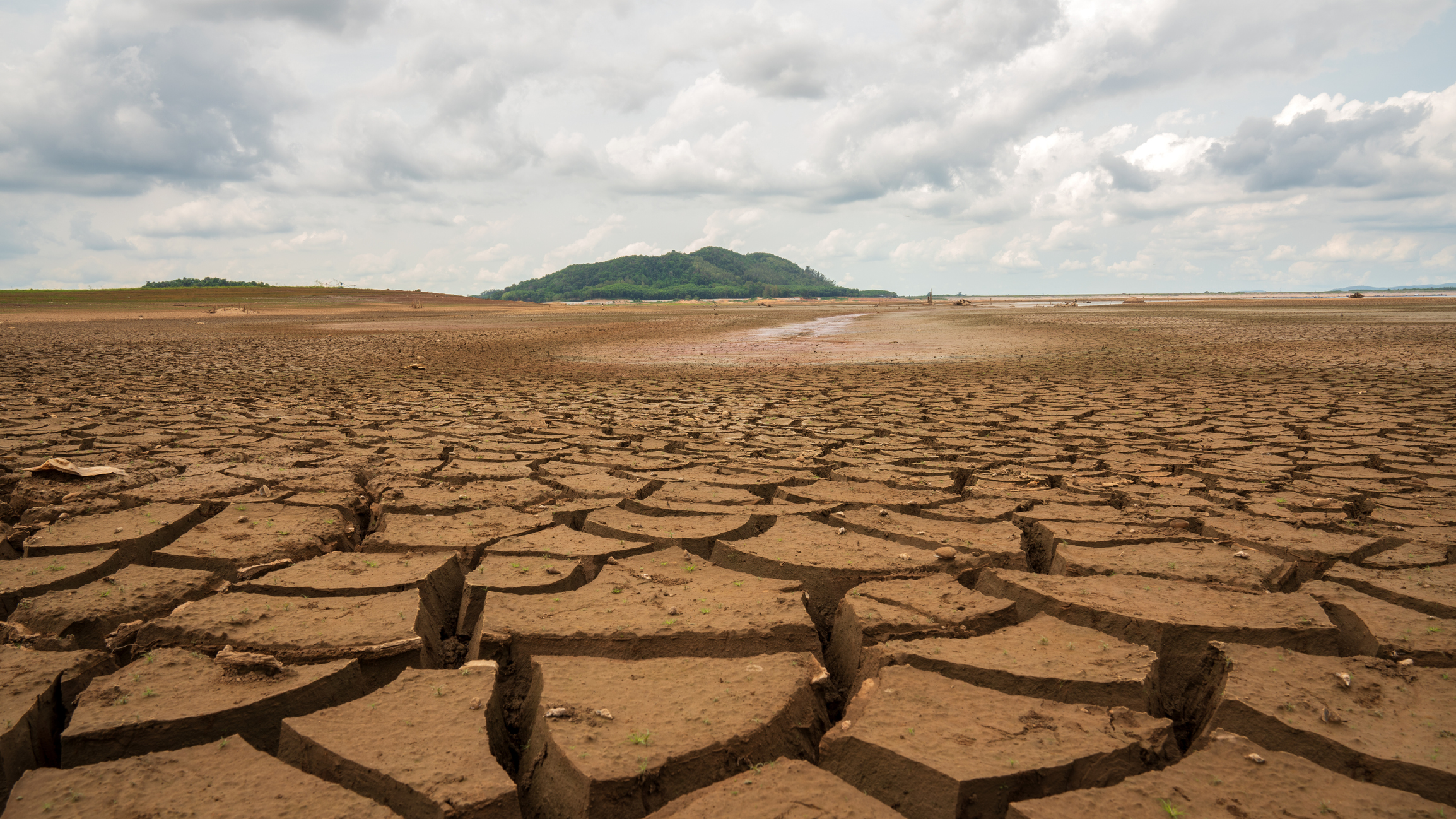How to profit from the world's water crisis
Ever-increasing demand from food production, combined with global warming, is creating a water crisis. But where there's a problem, there are companies searching for a solution - and that means exciting new profit opportunities for smart investors.


The world's water needs are leading to bold new technologies and brassy new profit opportunities for investors, say Janice Warman and Annunziata Rees-Mogg
Update: read Investing in water: how to cash in on blue gold for more on how you could profit from water
The lack of pure water is the greatest killer on the globe. Four children die each minute from illness caused by a lack of drinking water. That's the equivalent of 30 fully loaded Boeing 747s crashing every day far more than are killed by Aids and malaria combined.
MoneyWeek
Subscribe to MoneyWeek today and get your first six magazine issues absolutely FREE

Sign up to Money Morning
Don't miss the latest investment and personal finances news, market analysis, plus money-saving tips with our free twice-daily newsletter
Don't miss the latest investment and personal finances news, market analysis, plus money-saving tips with our free twice-daily newsletter
Yet the world is not running out of water. In fact, there is exactly the same amount of water as there was a million years ago. The problem is the soaring world population, the runaway urban sprawl and the rocketing cost of food production. The levels of waste are phenomenal. "A typical meat-eating, milk-guzzling Westerner consumes as much as a hundred times their own weight in water every day," says Fred Pearce, former New Scientist news editor and author of
.
That's because it takes between 2,000 and 5,000 litres of water to grow one kilogram of rice, 11,000 litres to grow the feed for enough cow for a quarter-pound hamburger, 50 cups of water for a teaspoon of sugar and 140 litres of water to produce just one cup of coffee.
In the 1960s, the planet's population was predicted to double in a generation and there were fears that there would simply not be enough food to feed the world. The result was the green revolution' a new generation of high-yielding crop varieties such as rice, wheat and maize. The world today grows twice as much food as it did then but uses three times as much water to grow it. Two-thirds of all the water taken from the environment goes to irrigate crops. "This is massively unsustainable, and has led many people to conclude that the apocalypse wasn't averted, only postponed," says Pearce.
Across the world, millions of small farmers are drawing water from underground to irrigate their crops. India, China and Pakistan pump out around 400 cubic kilometres of underground water each year, according to Tushaar Shah of the International Water Management Institute, a worldwide research network funded by the World Bank. Sri Lanka, Indonesia, Iran and Bangladesh are following suit. Even the US is emptying its underground reserves to grow grain and beef for export.
Investing in water: the virtual water trade
And the over-use of water doesn't just apply to food production. Every T-shirt you wear will take 25 bathtubs of water to produce. Every small car uses 450,000 litres. If what you wear or drive is imported, you in the West are helping to empty rivers across the world. Water used for growing food and making products is called "virtual water". Every tonne of wheat arriving at a dockside carries with it, in virtual form, the 1,000 tonnes of water needed to grow it, explains Pearce.
The global virtual-water trade is estimated at around a thousand cubic kilometres a year, or 20 river Niles. Two-thirds is in crops, a quarter in meat and dairy products, and just a tenth in industrial products. The biggest net exporter of virtual water is the US, which exports in grain and beef around a third of all the water it takes from the environment; Canada, Australia, Argentina and Thailand are all net exporters too.
Some importers of virtual water, like Japan and the EU, are not short of water but for others, including Iran, Egypt and Algeria, it is vital, explains Tony Allan of the School of Oriental and African Studies in London, who invented the term virtual water'. The Middle East ran out of water years ago, and Jordan imports 80%-90% of its water in the form of food.
Global warming means that the UK has not escaped the worldwide drought phenomenon. London's long-term average rainfall has now dropped below that of Istanbul, Dallas and Nairobi, points out Juliette Jowit in The Observer. The Government is considering proposals to introduce drought orders banning non-essential' use of water. Australia is suffering severe droughts, exacerbated by the El Nio effect. India's water table is at an all-time low and dropping fast; in some areas, it has fallen from 20 to 285 feet below ground level in the last decade. China is suffering from annual droughts, with Peking besieged by sand storms blowing down from the ever-expanding Gobi Desert. Southwestern America is struggling to find enough water for its growing population. California and Nevada are being particularly hard hit. "And the shortage is getting worse", Rick Rule of Global Resource Investments, a leading natural resource broker, told MoneyWeek.
Rivers are running dry across the world, from the Rio Grande in Texas to India and Northern Nigeria, and the Aral Sea in central Asia, where a thriving fishing industry died as the sea was drained to feed the cotton farms, and where now the population is being poisoned by dust storms of salt. Governments who concentrate on building yet more dams and draining subterranean aquifers need to look for other solutions, according to Pearce. We could grow crops with a quarter of the amount currently used, he told MoneyWeek. Most people don't pay an economic price for water because Government subsidies keep prices artificially low. "Until there is a price incentive, they won't cut back."The supply side mentality has bedevilled the industry. Water engineers have "an obsession with building dams, laying pipes and pouring concrete. They want to supply ever more water and they are deaf to calls for investment in demand management This supply-side fixation is creating a global hydrological crisis".
Investing in water: supplying the solutions
But where there is a problem, there must be a solution. And where there is a solution, there must be the opportunity for profit. So where can investors make profits from an industry that is the third-largest in the world? The solution lies in investing in solving the problems caused by decades of over-use and mismanagement of water.
In summary, there's a supply problem so prices will rise. The world's water pipes are crumbling and not only in Britain, where much of our water leaks into the ground before reaching us so there will be repair and replacement projects. There will be more privatisation. Municipal utility operators often do not have the resources to maintain the water systems up to regulatory standards.
Climate change will mean more extreme weather conditions and more water in the sea. Alternatives, such as desalinisation, are set for sustained growth. Southern Spain's Andalucia, one of Europe's most arid regions, is also the continent's most productive agricultural area. Intensive irrigation has seriously depleted resources. Now the city of Almeria collects and recycles all of its water, using it for agriculture. And the newly created Programa Agua will supply desalinisation facilities all along the Mediterranean coast.
This is an alternative that has long been considered too expensive. But that state of affairs is changing, says Dr Stuart Downward, lecturer in geography and environmental science at Kingston University and a specialist in water resources. "Huge volumes of power are needed to drive the pumps, but so many people are investing that the unit costs are coming down.
"Now cities are looking at their spreadsheets and say it's beginning to stack up. The traditional players have been in the Middle East, such as Dubai, and island communities. Malta and the Canaries have been using desalination for four to five decades because it's been their only source of water. Big cities are beginning to take it seriously. Perth has given the go-ahead for a big desalination plant."
Investing in water: new technologies
New water-quality standards are being put in place in countries such as China and India, which will drive major new investments in water treatment and purification. There will be new investments in water supply and other infrastructure projects. China, in particular, has water supplies that are very badly managed. There are massive shortages, and more than 70% of its industrial waste water is simply dumped into its rivers and lakes. Now China is trying to solve its problems, charging consumers and companies for water consumption, and allowing foreign companies.
There are countries that have an over-abundance of water and here there are opportunities for sale to other countries. Canada, for example, has the same amount of water as China, but just 2.3% of its population. Brazil has far less need of its water than many of its neighbours. As the value of water rises, countries like these will start to export their spare reserves to those more in need and willing to pay. Pipelines will spring up, connecting states and countries. Tankers will transport water across the sea as often as they do oil. Water will be on the move. And those who can transfer it will be there to benefit.
Already, Turkey exports water to Israel and Cyprus in large balloons that can hold up to five million gallons of water. Singapore buys 10% of its water from private-sector suppliers who have built desalinisation plants in order to reduce its reliance on Malaysia. Companies in Scandinavia are investigating the ways in which they can profit from their watery landscapes, such as one company that intends to ship the equivalent of 1,000 Olympic swimming pools of water to Iran every day.
This company is not listed. But there are still plenty of opportunities for investors. The profits will come from companies that help nations improve the water that they already have. Right now, many of these firms are small companies that most analysts, let alone the public at large, have never heard of. But some of them will soon be giants. After all, with the global water industry valued at $300bn a year by the UK Trade & Investment ministry, it can't be long until investors finally catch on.
For more on this topic, read When The Rivers Run Dry
by Fred Pearce, published by Eden Books.
Investing in water: the best water stocks to buy
To profit from the world's shortage of water, you might think that water utilities are an obvious way in. But companies such as Thames Water are highly regulated and have infrastructure up to 150 years old. There are better ways to profit from the "looming crisis," says Derek Moorhouse in the Fleet Street Letter. "One company we particularly like is Halma (HLMA)," which is active in leak detection and water-quality analysis. Not only has this diversified engineer "identified water as a key long-term growth market," but it has delivered an increased dividend every year for the last 26 years. Halma's shares have risen strongly in the last six months, but they are still on a price/earnings to growth ratio of 1.6, with a yield of 3.6% forecast to rise to 3.8% by 2008.
A less well-known company is Pico Holdings (PICO). Pico spotted a potential gap in the market and started buying up water rights in Nevada and Arizona. Though it's not a pure water play, it has been "consistently profitable," says Rick Rule of Global Resource Investments.The region is already suffering from water shortages, which are getting worse. The Colorado River supplies Wyoming, Colorado, Utah, Arizona, New Mexico, Nevada and California with water and the competition is fierce. That gives private water rights "a huge premium," says Rule. By holding a substantial number of water rights, Pico "is turning water into money."
Another, even more obscure company, is Boswell Land and Farming (BWEL). It is the largest farm owner in California and with its farmland comes one of the area's largest aquifers, or underground lakes. The Tulare Lake is now a cotton field. But underneath there is still lots of water an estimated 400,000 to 2,000,000 acre feet (the amount that would cover one acre a foot deep) a year that could be drawn up without damaging the environment. At the lowest estimate, that's enough water to service 800,000 Californian families every year.The Californian municipal water agency values water at $10,000 per acre foot if it is easy to get to (Boswell's aquifer runs next to the main canal), making it worth at least $4bn. Its shares are $745, giving a market cap of just $750m. The company is also building 50,000 homes. That could end up being worth another $5bn and make its shares soar. (Boswell is a family owned company, but it has 500 shareholders who trade on the OTC market. It is highly illiquid, but if you want to buy the stock, Rick Rule says: "Give me a call.")
One great water firm that "is yet to hit British investors' radar" is Doosan Heavy Industries and Construction (034020), says Edward Lam of Lloyd George Management. They invested in the company "partly as a water play, but also because it's a great company." The South Korean firm makes desalination plants indeed, it is "the world's largest maker of plants that purify seawater," says Keejin Koo on Bloomberg. It already has massive plants all over the Middle East and is constantly winning new projects. Alongside its desalination plants it also builds power plants so as our energy needs grow, it gets a second kick. The company is currently on a forward p/e of 15.9, which is cheap for such a good growth story.
Small stocks are higher risk than their bigger counterparts and investors ought to investigate them thoroughly before handing over their cash. One lower-risk option is a US-listed water ETF (exchange traded funds). ETFs are a basket of shares that you can buy and sell like a normal share. The PowerShares Water Resources Portfolio (PHO) is based on the Palisades Water Index, which identifies companies that focus on the provision, treatment and technology of water. It is up more than 39% in the last year (compared to the S&P 500, which is up just under 12%).
Get the latest financial news, insights and expert analysis from our award-winning MoneyWeek team, to help you understand what really matters when it comes to your finances.
Annunziata was a deputy editor at MoneyWeek, covering financial markets, politics, economics and comment pieces. She then went on to the Daily Telegraph as a lead writer where she wrote a column on young women’s financial issues. She was briefly a member of the European Parliament for the East Midlands region in the UK as part of the Conservative Party. Annunziata continues to write as a freelance journalist.
-
 Autumn Budget tax changes: how is your generation affected?
Autumn Budget tax changes: how is your generation affected?The chancellor expects everyone to do their bit to boost the nation's finances but the tax burden is by no means shared equally
-
 Revealed: pension savers ditch investment trusts and favour passive funds
Revealed: pension savers ditch investment trusts and favour passive fundsDemand for investment trusts is cooling among self-invested personal pension (Sipp) customers, who are increasingly choosing money market funds, passive funds and individual shares

